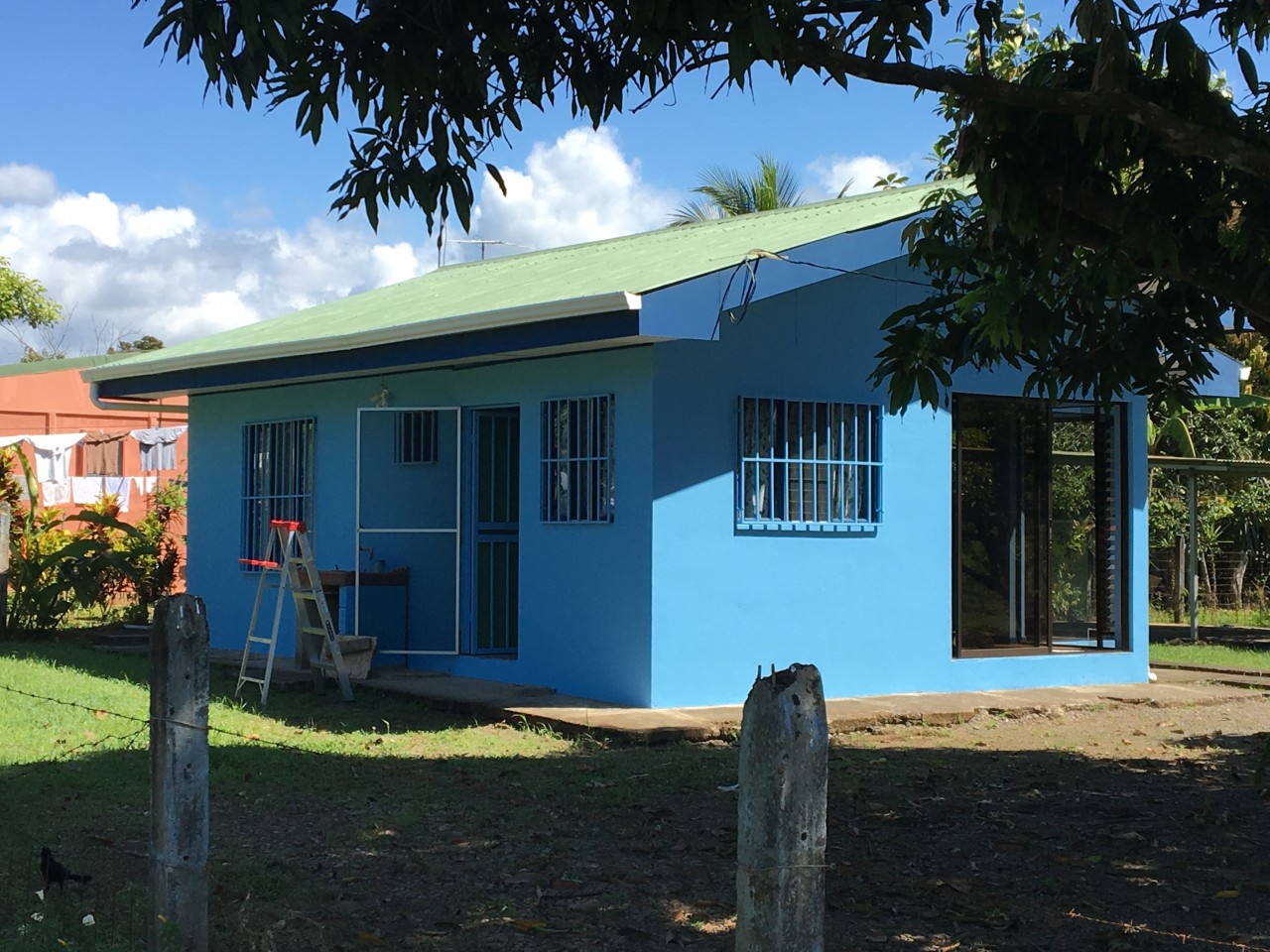“What do you do for a living?” This question is within most peoples’ arsenal of small talk and often arises shortly after questions like “what is your name?” and “where are you from?” Often, when I tell people that I build micro homes they are fascinated, state that they absolutely adore them and describe the various tiny home television shows that they watch regularly. However, upon my family’s most recent trip to Costa Rica, this dialogue changed. The locals had never heard of micro homes, in fact, micro homes were the regular sized dwelling in their country. I had to explain that our average home size in Canada is roughly 2000 sq ft and our company specializes in building homes under 1000 sq ft. This was definitely a foreign concept to the local Costa Ricans, and when I looked around, I could see why. Typical houses, like the one pictured above, ranged between 400 – 800 sq ft.
This got me to thinking about the history of home sizes and the factors that influence the size of dwellings in various parts of the world. My first thought was that we live in larger houses in the north because we spend more time in doors. I felt that this theory was proven as I was greeted by people, outside their homes, at every house I attempted to photograph. I could walk around my neighbourhood taking pictures of houses all day and rarely run into one of the home’s residents (as one would suspect with temperatures dipping to -25 degrees Celsius this past week).
Of course, I realize that the temperature is not the only reason we live so “large” in Canada. This evolution to large homes happened over time. According to an article written in the Globe and Mail, in 1975, the average size of a house in Canada was 1,050 square feet. In 2010 new homes being built were almost double the size at an average of 1,950 square feet. The Globe also noted that the average number of people per dwelling was decreasing in the same time period. In the USA, the National Association of Home Builders reports that the average home size was 983 square feet in 1950, 1,500 square feet in 1970, and 2,349 square feet in 2004.
Why has the size of our homes in Canada and the United States doubled in the last ½ of a century? Quite simply put, I believe it is because they could. Technology such as electric lighting and central heat allowed for living activities to be spread out over more rooms and larger spaces. The advent of vehicles provided a way for people to move out of decaying urban neighbourhoods into suburbs with an abundance of land being parceled into large lots. The rapid rise of media mechanisms allowed the image of luxurious living in large homes to permeate our daily lives like never before. All of this coupled with frequently low interest rates and the ability to get a home mortgage resulted in the large home boom that has been the norm in recent years.
Why has this trend not been so drastic in the rest of the world? According to shrinkthatfootprint.com, new homes averaged between 484 ft2 in Hong Kong to 2,303 ft2 in Australia. They speculate that “There are all sorts of reasons for these differences. Wealth levels, urbanization rates, land access and climate all play a part.”
So, why the trend to smaller homes in places like Canada and the United States now? I think there are a few reasons:
1. Design – Until recently the only way to live in a smaller space was attached to others in a condo or townhome building. This style of living does not appeal to many North Americans who have grown up in a culture that prides itself in single family dwelling home ownership. In addition, the innovative use of smart storage solutions and large window/high ceiling designs have made living in a small space more comfortable than ever.
2. Life Satisfaction - We have discovered that the shift to larger homes has not necessarily impacted us in a positive way or created more happy communities. The evolution of our living spaces has had a direct effect on our relationships with our families and our communities. Staying indoors in less walkable neighbourhoods has isolated us from our peers while having multiple rooms filled with technology for each individual has isolated us from our family. Smaller living works for those who desire to simplify and focus on experiences and connectedness vs. home maintenance/mortgage and upkeep.
3. Immigration - According to the Financial Post “With increased immigration on the horizon, those arriving in Canada may not have the same size expectations, creating demand for smaller units.”
4. Affordability – Housing prices have skyrocketed in recent years and the reality is that whether you are a first time homebuyer, or a retiree, living in a smaller home will cost you less. Money is saved on the purchase price, utilities, maintenance and furnishings. This allows small home owners to have both more time and money for hobbies, travel, community service, sporting and leisure activities.
So here we are. Not all Canadians will immediately transition to living in 500 sq ft bungalows like our Costa Rican friends, but some of us will. Those that do, will do so for many of the same reasons that applied to Canadians in the 1950s and still apply to many people in various countries, like Costa Rica, today. As Costa Rica has ranked #1 since 2009 in the Happy Planet index, (a tool that measures statistics such as life expectancy, ecological footprint and wellbeing), emulating a little of what they are modeling can only be a good thing!
Resources:
http://shrinkthatfootprint.com/how-big-is-a-house
